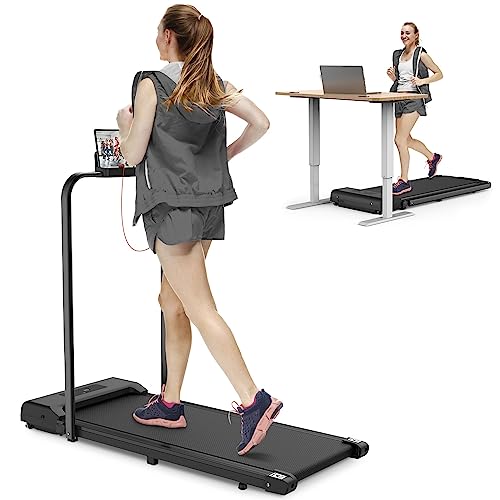Treadmills: A Comprehensive Guide to Understanding Their Functionality, Benefits, and Appropriate Selection
Intro
Treadmills have become a staple in modern-day physical fitness regimens, both in homes and fitness centers worldwide. They provide a hassle-free and efficient method to preserve cardiovascular health, boost endurance, and help in weight management. This post explores the various kinds of treadmills, their advantages, functions to think about when purchasing, and some FAQs to direct users in making informed choices.
Types of Treadmills
When it concerns choosing a treadmill, it is important to understand the various types readily available in the market. Here are the primary classifications:

1. Handbook Treadmills
- System: These treadmills have a simple design and rely on the user's efforts to move the belt.
- Pros: More budget friendly, quieter operation, no electricity needed.
- Cons: Limited features, might not offer the very same variety of exercise strength.
2. Motorized Treadmills
- System: Powered by a motor that drives the belt, allowing users to walk or run at a set pace.
- Pros: Greater variety of speeds and inclines, geared up with numerous features such as heart rate displays and exercise programs.
- Cons: More costly and might require more upkeep.
3. Folding Treadmills
- Mechanism: Designed for those with limited space, these treadmills can be folded for simple storage.
- Pros: Space-saving, typically motorized, versatile functions.
- Cons: May be less resilient than non-folding models.
4. Business Treadmills
- System: High-quality machines developed for use in health clubs and physical fitness centers.
- Pros: Built to stand up to heavy usage, advanced functions, typically include warranties.
- Cons: Pricey and not ideal for home use due to size.
5. Curved Treadmills
- System: A distinct style that permits users to propel the belt utilizing their own energy.
- Pros: Offers a more natural running experience, promotes much better running kind.
- Cons: More costly and can be noisier.
| Treadmill Type | Pros | Cons |
|---|
| Handbook | Inexpensive, no electrical energy required | Limited features |
| Motorized | Variety of speeds, advanced functions | Upkeep required |
| Folding | Space-saving, often motorized | May lack sturdiness |
| Commercial | Developed to last, professional-grade features | Expensive |
| Curved | Natural running experience, promotes good type | Higher price |
Benefits of Using Treadmills
Treadmills use many benefits that can add to one's overall fitness and health objectives. A few of these benefits include:
- Convenient Workouts: Treadmills permit users to work out inside your home no matter climate condition.
- Cardiovascular Health: Regular use can improve heart health by increasing stamina and promoting healthy circulation.
- Weight Management: Effective for burning calories, which helps in weight-loss and management.
- Adjustable Workouts: Users can manage speed, incline, and duration to create personalized exercise experiences.
- Security: Treadmills provide a foreseeable surface area, lowering the risk of falls compared to outside running.
- Multifunctional: Many treadmills included functions like heart rate displays, exercise programs, and even entertainment systems.
Choosing the Right Treadmill
When picking a treadmill, potential purchasers must think about a number of essential factors:
Features to Consider:
- Motor Power: Typically measured in horse power (HP), a motor strength of at least 2.5 HP is advised for serious runners.
- Belt Size: A longer and wider belt accommodates different stride lengths, providing convenience during exercises.
- Incline Settings: Adjustable slope functions replicate outdoor hill running and can increase exercise strength.
- Weight Capacity: Ensure the treadmill can support the user's weight for security and longevity.
- Console Features: Look for user-friendly dashboards, exercise programs, and Bluetooth compatibility for streaming music or other functions.
Spending plan Considerations
- Under ₤ 500: Entry-level manual treadmills appropriate for casual walkers.
- ₤ 500 - ₤ 1,500: Mid-range motorized treadmills that use more features and better durability.
- ₤ 1,500 - ₤ 3,000: High-end models with sophisticated innovation, bigger motors, and longer guarantees.
- Over ₤ 3,000: Commercial-grade treadmills perfect for frequent use in gyms or training centers.
Frequently Asked Questions (FAQs)
1. How typically should I utilize a treadmill?
It is recommended to use a treadmill at least three to 5 times a week, including numerous strength levels for best outcomes.
2. Can I lose weight by utilizing a treadmill?
Yes, constant use of a treadmill can add to weight loss, especially when integrated with a balanced diet and strength training.
3. What is the best speed to stroll on a treadmill for newbies?
A speed of 3 to 4 miles per hour is an appropriate range for beginners. It's necessary to start slow and gradually increase rate as convenience and endurance improve.
4. Do I require to utilize a treadmill if I currently run outdoors?
Utilizing a treadmill can supply extra benefits, such as regulated environments and differed exercises (slope, periods) that are not constantly possible outdoors.
5. How do I preserve my treadmill?
Regular upkeep consists of oiling the belt, cleaning up the deck and console, and examining the motor for optimum performance.
Treadmills are necessary tools for those seeking to enhance their fitness levels in a regulated and convenient manner. With numerous types offered, understanding their features and benefits is essential for making an informed purchase. By considering personal exercise needs, space availability, and budget plan restrictions, people can find the most suitable treadmill that fits their lifestyle. Incorporating Treadmill near me workouts into a well balanced physical fitness regimen can result in enhanced health outcomes and an enjoyable exercise experience.



